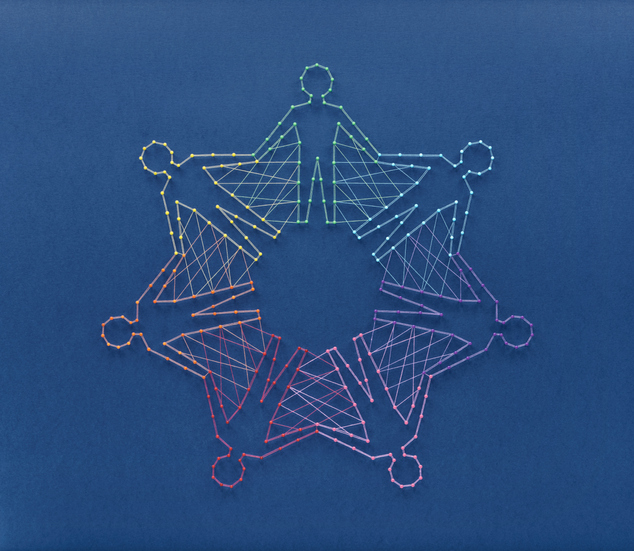Thanks to a large number of pharmaceutical, environmental, technological, agricultural, and social advancements made over the last several decades, for the first time ever, there are now five generations in the modern workplace. These are:
- Traditionalists, or the “Silent Generation” (1925-1945);
- Baby Boomers (1946-1964), who make up 25 percent of the workforce;
- Generation X, or the “Lost Generation” (1965-1980), who comprise just about a third (33 percent) of the workforce;
- Millennials (1981-2000), who make up roughly 35 percent of the workforce—one of the fastest-growing groups; and
- Generation Z (2001-2020), who currently make up just 5 percent of the workforce—a number that is expected to increase drastically over the coming years.
As to be expected, just like with any other diverse workforce, differences, divisions, and points of contention abound. As experts will note, age is one of the least-understood demographics—especially in the workplace—further exacerbating intergenerational dynamics. Ageism is ripe, as is its inverse. But, for the most part, employers have a solid understanding of what’s expected of them to alleviate such hostilities: training, education, and conversation. Older generations need help with mastering new technologies; younger workers want guidance on how to craft longeval, sustainable careers; both can seek aid from the other, through the power of conversation, active listening, and team building.
But, when it comes to one particular issue—the issue of mental health—how employers can strike a balance isn’t exactly clear.
The truth is, the subject of mental health is approached much differently with each new generation. The newest of the pack—or rather, Gen Z—want free rein when it comes to talking about mental health at work, with no experience is too private, “too much information,” or off limits to discuss, whereas the elders—or, as they’re aptly dubbed, the “Silent Generation”—have historically been tight-lipped about the subject during their tenure.
Similarly, rates of mental health among these groups differ drastically, too (although, as some experts caution, this might be because of the generational differences that render younger workers more likely to speak up about and seek help for their mental health and older workers less so), as researchers find that the prevalence of common mental health disorders is statistically higher among Gen Z and Millennials compared with Gen X and Baby Boomers.
With these disparities in mind, it can be hard for employers to discern what their workforce wants from them when it comes to benefits and the culture surrounding mental health at work. To that point, by learning more about these generations’ differing and, more importantly, overlapping needs and desires, employers can gain a better idea of the resources, services, and strategies they ought to implement in their workplace.
Where The Generations Differ…
Baby Boomers
Mental Health:
- Because they were raised to be hard-working and self-sufficient, this cohort of workers grapples with statistically higher levels of mental health stigma; specifically, the idea that mental illness is a ‘choice’ or a ‘weakness.’
- Internalized stereotypes that experiencing a mental illness or challenge was synonymous with being “insane” or “unfit” for the working world.
- The bottom line: to boast a successful, longeval career, one must be mentally fit. Thus, many Baby Boomers are unlikely to open up about their mental health.
Work-Life Balance:
- Work-life balance is attained when Boomers feel connected to and satisfied with the work that they do; they want their work to matter to society, they want to matter to their colleagues via mentorship opportunities, and they want to know that they matter to their managers via ample rewards and recognition.
- As many now inch toward retirement, opportunities for flexible, part-time, and work-from-home options—as well we retirement benefits and full healthcare coverage—are also growing in importance.
Generation X
Mental Health and Wellbeing:
- Because of their familial and even social neglect, researchers maintain that Gen Xers are perhaps the most hardy, self-reliant, and resilient of all other working generations.
- Thus, while research finds that Gen X is the most stressed group of employees, studies find that mental health often takes a backseat to Gen X’s nutritional and physical health, as Gen X’s top health priority is to “lose weight,” compared to millennials whose top priority is to “get more sleep and reduce stress.”
Work-Life Balance and Workplace Wellbeing:
- Growing up amidst drastic changes—some good, and some bad—Gen Xers have learned to be far more pragmatic, skeptical, and frugal with their time, energy, and money than their carefree predecessors, and are considered to be fiscally responsible, adaptable, and always prepared for change (or rather, disaster).
- They see their jobs as a contract, in which both the employer and employee have equal footing and thus demand equal respect.
- What leaves them feeling happy and fulfilled in the workplace, is happiness and fulfillment in their personal lives.
- 81 percent of Gen Xers cite “flexibility” as the most important factor to consider when looking for a job.
- Similarly, they express a much higher demand for caregiving benefits, including childcare and eldercare services, as well as holistic and customizable family health coverage. They place considerable value on financial benefits, including 401(k) and retirement savings plans, mortgage services, financial planning, and financial assistance services.
Millennials
Mental Health:
- The collective trauma that Millennials experienced—especially as a result of 9/11 and the Great Recession—has led to this cohort of workers being dubbed as the ‘anxious’ generation, as over 40 percent of Millennials are estimated to have a mental health condition—more than double that of their predecessors.
- While Millennials are far more willing to talk about their mental health challenges and are far more likely to seek out help for them compared to older generations, stigma still abounds—especially when it comes to the idea that one should be able to manage mental health woes on one’s own.
- Because of the emphasis placed on self-sufficiency when it comes to mental health, a new analysis from the CDC reveals that Millennials are the age group hardest hit by substance abuse—and are the most likely to die from it.
Work-Life Balance:
- As a result of the near-constant chaos that has ensued since their entry into the workforce, nearly two-thirds of Millennials say they are not where they want to be, as many can’t afford to live on their own, to pay off their debts, to raise a family, to pursue a degree or a career change, or meet their basic needs.
- Despite this mass hardship, Millennials are also considered to be cautiously optimistic, achievement-oriented, challenge-seeking, and future-focused workers; embracing change even when it’s hard to do—and walking away from employers who don’t.
- Naturally civic-minded, what with both the global disasters they bore witness to and the negative impacts of social media and the internet that they were subjected to, Millennials largely see their job as a way to make a positive impact on the world, as nearly 80 percent claim that it’s “very important” that their employer gives back to society in some way, instead of just making a profit.
- Millennials also just want to have fun at work—and believe it’s possible. They’re excited by the prospect of professional development opportunities—always looking to gain skills or experiences that will look great on a resume—and they’re especially motivated by opportunities for internal growth.
Gen Z
Mental Health:
- Equally as disheartened as they are empowered by the future, research from McKinsey reveals that—despite Gen Z’s commitment to changing the status quo—this group of workers currently has the least positive outlook on life, coupled with the highest prevalence of mental illness of any generation.
- Nearly one in four Gen Zers have been diagnosed with anxiety or depression—more than any other generation—while the overwhelming majority (a whopping 91 percent) report experiencing daily stress, particularly about events or topics covered on the news, like school shootings, the deportation of immigrants, sexual harassment or assault cases, and climate disasters.
- More alarmingly, research from McKinsey has also found that Gen Zers are two to three times more likely to report thinking about, planning, or attempting suicide—indicating that there’s a major mental health crisis developing among this age group.
- Thankfully, however, because of their relatively higher levels of mental health literacy thanks to their access to the internet, along with the normalization of otherwise “private” or “personal” conversations across social media, Gen Zers are not afraid to talk about their mental health woes and seek support when needed. In fact, according to a recent survey by Deloitte, when asked which aspect of their lives they prioritize most, “mental health” came first among this demographic, as nearly 40 percent of Gen Zers report having received some kind of treatment or counseling for a mental health condition.
Work-Life Balance and Workplace Wellbeing:
- Never knowing a time without the internet—and subsequently being raised on social media—Gen Z, or the “first global generation,” is one shaped by concern, uncertainty, caution, and compassion. More civic-minded than their Millennial predecessors, more pragmatic than their Gen-X predecessors, and perhaps more entrepreneurial than Baby Boomers, Gen Zers are committed to cultivating the community, the culture, and the climate they want—knowing all too well what the stakes are if things continue as they are.
- In keeping with this natural tendency or inclination to go after what they need, Gen Zers are notably unabashed when it comes to expressing exactly what it is they need—or rather, expect—from employers when it comes to compensation, benefits, and overall treatment. For starters, as Gen Z lives by the harsh truth that it’s up to them to carve out the future they want and the society they want to live in, they are perhaps notorious for their want of a diverse, equitable, inclusive, and sustainable workplace: no baiting, no greenwashing—Gen Zers want cold, hard proof that their employers are committed to their social strategy, impacting positively on the environment, global community, and peoples they serve.
- Similarly, despite being wrongfully accused as “money-motivated,” Gen Zers are also not afraid to talk openly about their compensation, ensuring that they’re getting paid what’s fair—and ensuring that they have opportunities to make more by way of internal promotions, taking on additional projects, and other performance metrics. But while salary is important to this sector of the workforce, far more important to them is their benefits package. While older generations consistently pine for flexibility, research shows that Gen Zers are in much higher demand for inclusive, affordable health coverage—including wide-ranging mental health benefits (e.g., mindfulness and meditation programs)—financial and student loan assistance, tuition reimbursement, training opportunities, and other wellness benefits.
Where They All Agree…
While each generation may have a different take on mental health and how employers ought to approach the subject, on a few things they can, at least, all agree:
Financial Wellness is a Must
As the world grapples with lingering inflation and the still-rising costs of living, it’s the employer’s job—nay, duty—to support his or her workers financially. And this goes beyond providing a fair salary, as employees of all ages express a strong interest in comprehensive financial wellness benefits, such as coaching, loan assistance, tuition reimbursement, mortgage and debt services, and retirement planning.
And contrary to what some might think, this desire for tuition reimbursement and loan assistance extends beyond Millennials and Gen Z; in fact, researchers have found that Baby Boomers have the highest average student loan balances, as “significant numbers pursued later-in-life higher education,” while many others assisted their children or grandchildren with educational expenses. Similarly, while retirement may not yet be in the imminent future for the youngest of the workforce, research indicates that Gen Z is perhaps most concerned about their means to retire and is desperate for retirement planning assistance.
A Focus in Family Care is Needed
Personal development seems to matter deeply to all working generations. While Gen Z is only starting its transition into married life or parenthood, the precarious state of the world has forced them to be very conscientious and proactive about future plans, which means that even these soon-to-be parents are looking for child and family care benefits that suit their needs, as well as other health and wellness benefits that can extend to their spouse and/or kin. At the other end of the spectrum, thanks to improvements in healthcare and average life expectancy increases, research finds that as many in seven in 10 baby boomers have at least one living parent—whom, more often than not, they are serving as caretakers for. To that end, there is a great need for elder care services among this generation, in addition to dependent care services as many of them continue to look after their children or grandchildren.
“Wellbeing” At Work and at Home is the Employer’s Duty to Cultivate
While viewpoints may, once again, differ widely when it comes to mental health and mental health treatment, workers of all generations still express a keen interest in health and wellness programs in some way, shape, or form. This includes nutritional support: having a health and fitness coach create meal plans, educate them about different diets and what diets pair well with certain health conditions; physical support: learning different exercises or workouts, being able to take in-person or online fitness classes such as group yoga or cycling, coming up with an exercise or weight loss regimen; and mindfulness and meditation support, helping them to remain present, aware, centered, and composed through work and life’s challenges.
How Wellbeing Programs Can Help Leaders Manage Multigenerational Workforces
When it comes to the issue of employee health and wellbeing, studies have demonstrated that strategies that implement “adaptive and responsive workplace programs,” that take a “participatory approach” toward improving health and wellness outcomes produce the most favorable results—both in terms of staff participation and improvements to self-rated health and wellbeing. To leverage such an approach toward improving these metrics across multiple generations, investing in a holistic wellbeing program is the most effective way to achieve this.
Why? Because the ability to address such a vast and unique display of needs is already built into the system; in fact, it‘s the core of what a wellbeing program aims to do.
By investing in a wellbeing program, employers can ensure that their employees have access to basic emotional, practical, and physical support—whilst also having the opportunity to choose from a list of enhanced services that target niche employee groups.
Importantly, in the context of multigenerational support, these services can include:
- Return-to-work and reintegration programs, which can be particularly beneficial for older workers returning to work after a medical or bereavement leave—or perhaps a sabbatical; working parents, returning to the office after maternity, paternity, or caregiver leave; and other employees returning to the office after completing a substance rehabilitation program or inpatient program;
- Care assistance or coaching programs, which can be particularly beneficial for Gen X and Millennial workers taking care of aging parents or young children and dependents, helping them navigate through changes related to caregiving, evaluate their options and develop a custom care plan, and find back-up child- or eldercare services in their area;
- Tobacco cessation coaching programs, which, as noted, can be particularly helpful for Millennials who are hardest hit by the effects of drug and alcohol abuse, as well as workers of all ages struggling from the effects of nicotine addiction; and
- Student assistance programs, which are particularly useful for Gen Z and Millennial workers as they navigate through work, life, and academic challenges, helping them with career and financial planning, loan assistance, emotional counseling, life coaching, and more.
As everyone knows or should know, employees are dynamic individuals, each with their own set of strengths and weaknesses, triumphs and challenges. Their needs cannot be pigeonholed: for instance, not all Gen Zers and Millennials are or were students, and not all Baby Boomers and Gen X workers are parents or caregivers. What one employee excels at, another may struggle with. That said, it’s important for employers to remember the importance of providing “basic,” or, rather, holistic, non-siloed support to their staff—which wellbeing programs provide.
These support services can include:
- Emotional support, which includes mindfulness programs developed to help counteract or manage stress; in-the-moment counseling support, as well as self-managed therapy;
- Practical support, which includes life coaching, referrals, resources, and management services for caregivers, financial support (e.g., educational resources, bankruptcy prevention, budgeting, financial fitness, debt reduction and management, planning, housing education, and long-term goal setting), and legal support;
- Physical support, which includes wellness coaching (e.g., wellness plans, weight management, nutrition, tobacco cessation, physical fitness, stress management, and lifestyle improvement); and
- Learning solutions, which includes diversity, equity, and inclusion (DEI) training, ambassador and mentorship training, leadership training, crisis management training, as well as live or self-paced e-learning solutions.
With these services in place and ready to be utilized, employers can ensure that workers of all ages not only get the ‘customized’ support that they need—that’s tailored to their generations’ own unique experiences—but also the fundamental types of support for basic needs that apply across all generations.
Another essential way in which wellbeing programs can help employers to bridge the generational gap is through their multimodal approach to care. As is most oft mentioned every time the subject of “generational divides” is brought up, each generation’s preferred communication style signifies perhaps the biggest rift between each of the age groups. Gen Z is allergic to phone calls. Baby Boomers are perturbed by texting. They each have their own language, their own way of communicating, and their own way of relating to others—making it essential that the counselors, clinicians, or coaches that they speak to address—or rather “connect”—with them in a way that will really resonate with them as individuals.
That said, employees who access their organization’s wellbeing program will have multiple options to choose from when it comes to contacting a care professional, including video, chat, email, text, or phone. Similarly, employees will be able to select from a diverse network of providers, ensuring that they get the culturally competent care that they need—something that is very important for workers at the youngest and oldest ends of the age spectrum, who often feel misunderstood by the world they’re entering, or the world they’re leaving behind.
Ultimately, the greatest benefit that a wellbeing program can provide when it comes to “bridging the generational divide” and supporting a multigenerational workforce, is choice. The ability to choose the right service for them, the ability to choose how they access that service, and the ability to choose the provider or the person that delivers said service. With this flexible system in place, employers can ensure that all of their workers are happy, fulfilled, and overall healthy—without having to sacrifice or sideline one employee’s need for another.



































